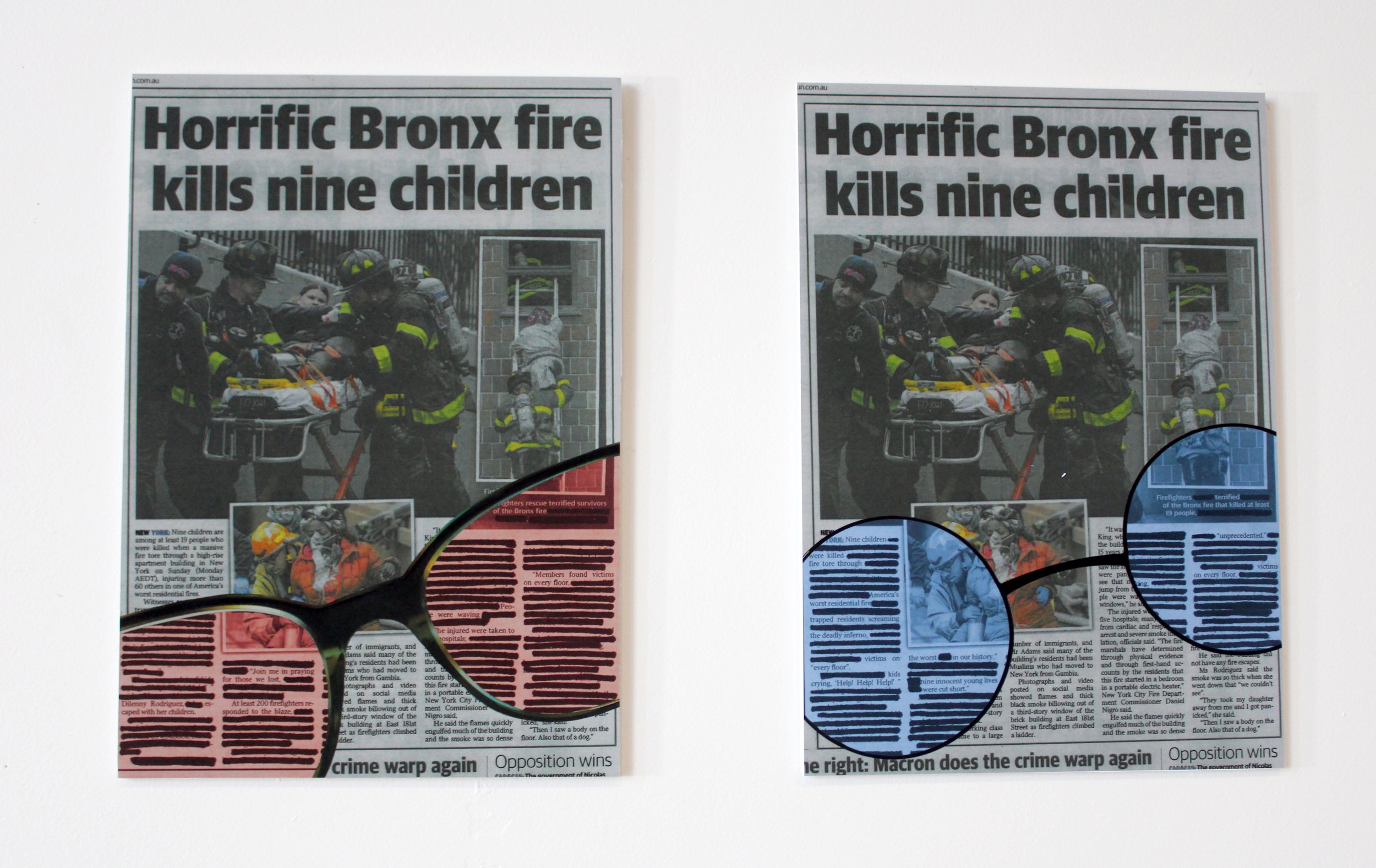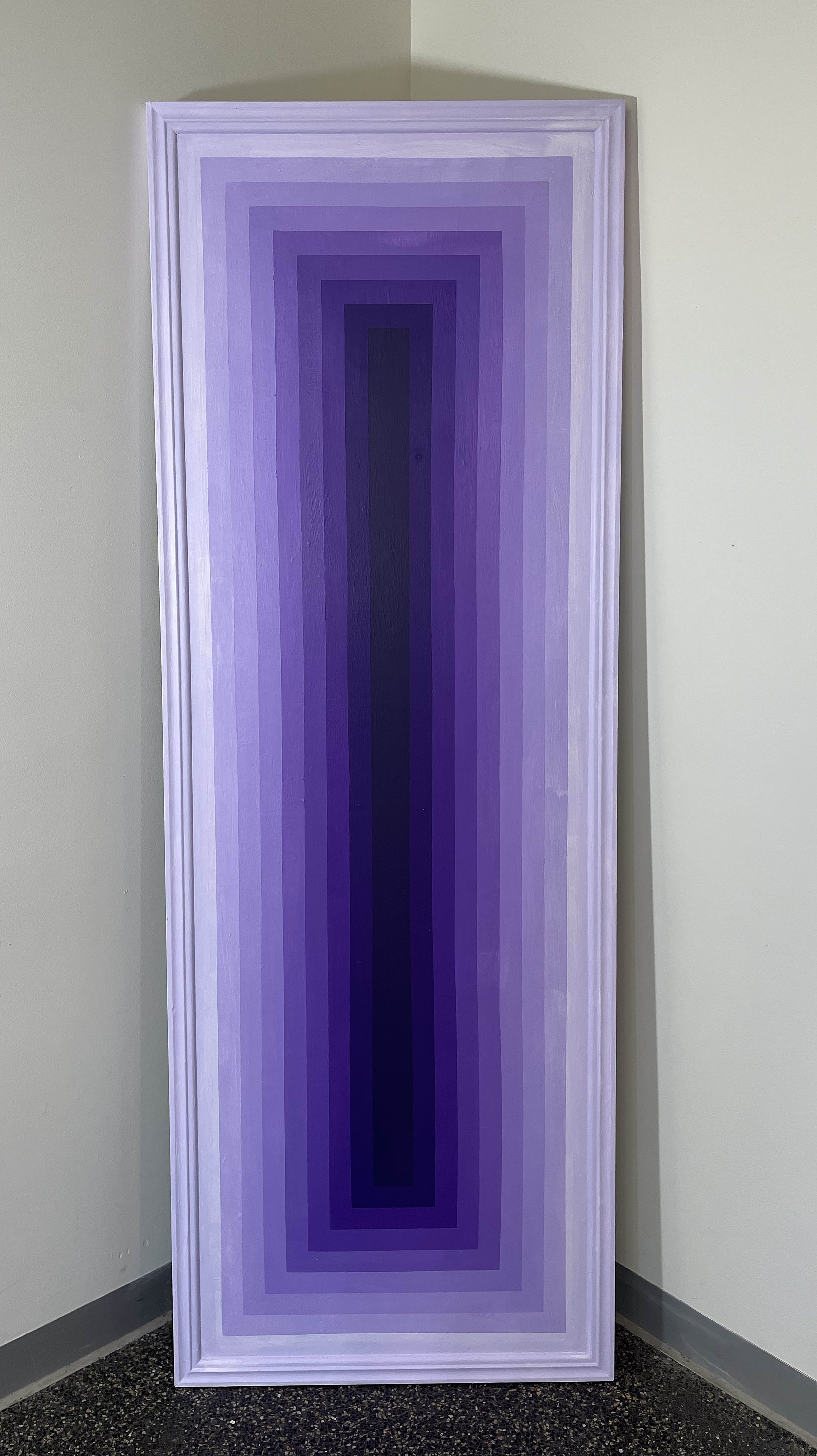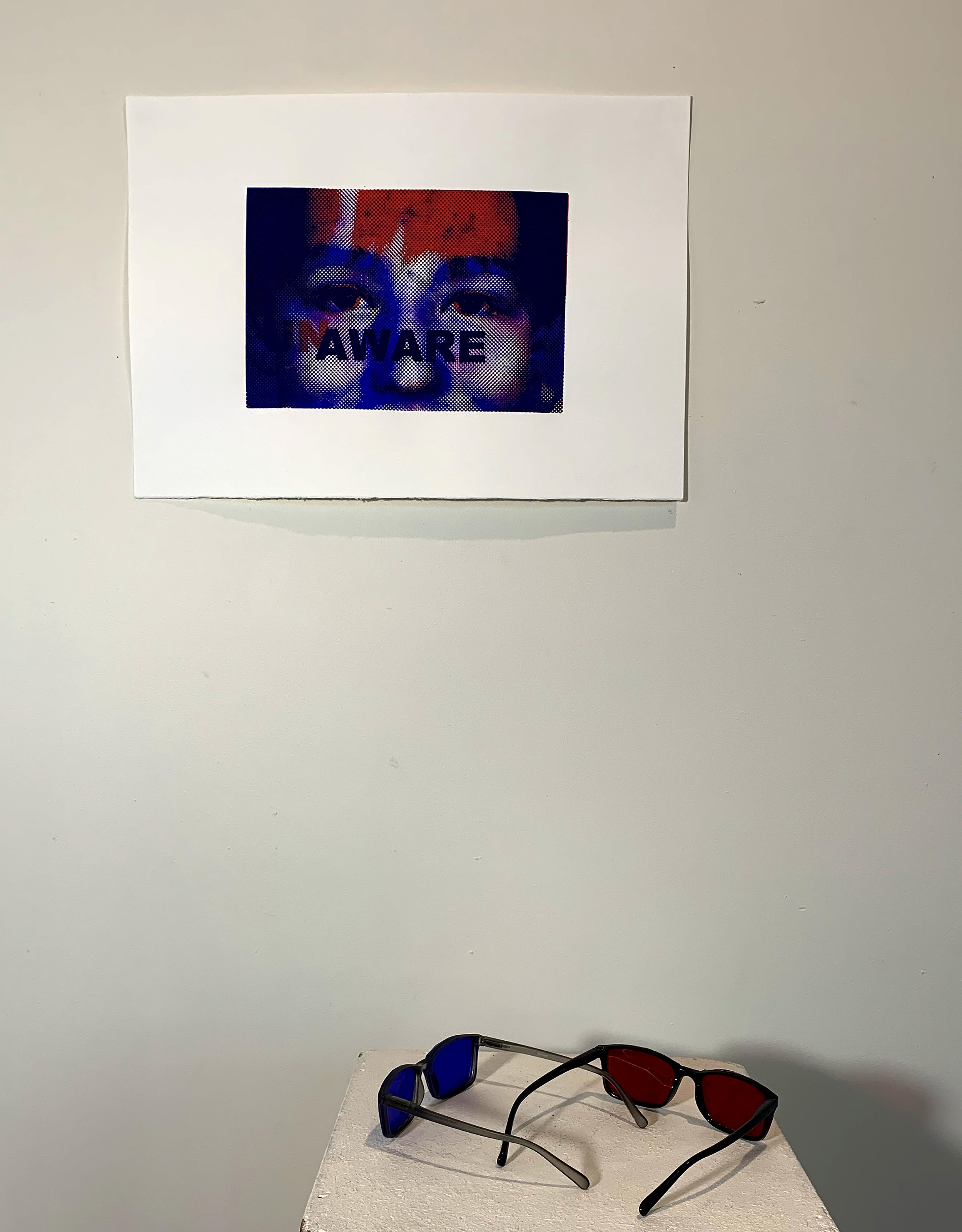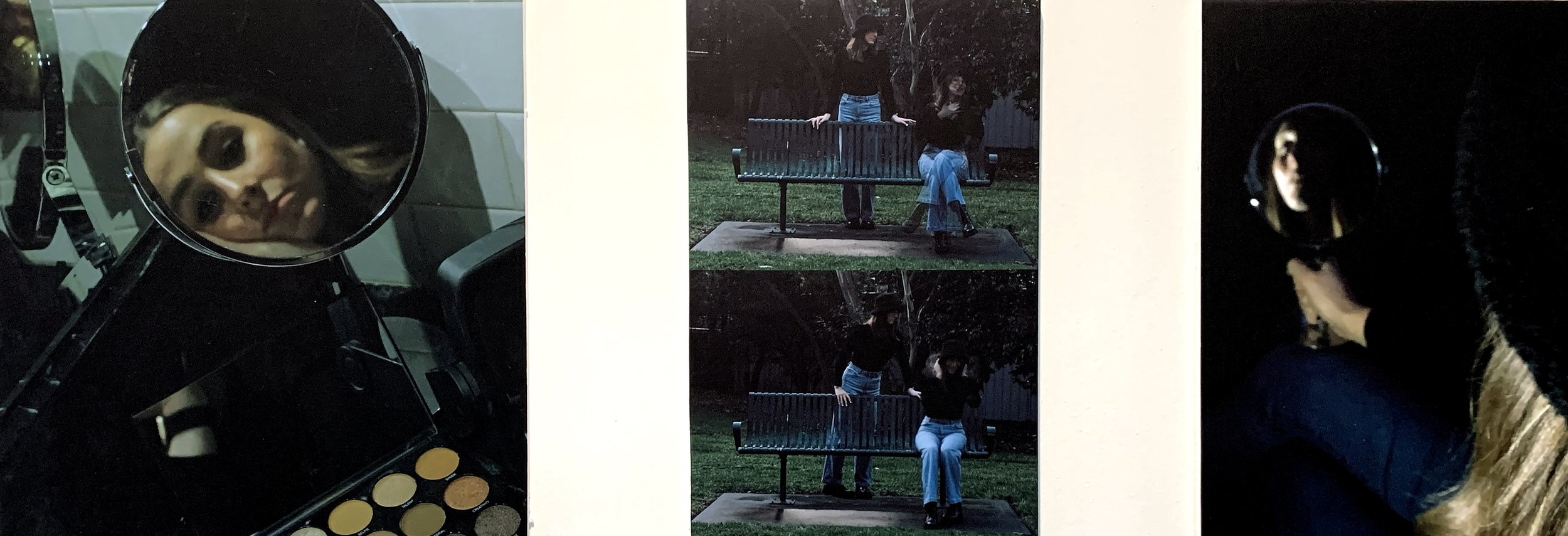IB VISUAL ARTS 2022
Christian Arnel
Although we all biologically ‘see’ the same stimuli, our unique psychological perceptions modulate our experience of the world. Studying visual perception through a psychological lens fascinates me and emphasised how psychological perception and the visual arts are intrinsically linked: responding to artworks is extremely personal and how each viewer perceives an artwork is distinct. Through my exhibition, I provide the viewer with an insight into the complexities of human perception: our innate biases, yet their individuality in our perception of the world, the tendency for our perception to shift through time due to the influences of our environment, and the inherent desire of the brain to perceive, even when it lacks the physical stimulus.
For two of my artworks, I position the viewer into differing perceptions via various techniques. In Is it growing up or just realisation?, I invite the viewer into the artwork. By adorning the red/blue lenses, they control how they interpret the layers of my perception. Contrastingly, in “You’ve seen the news, right?”, the viewer surrenders perceptive control to read the article—one can only read it through the glasses’ inbuilt blind-spots representing the inevitability of biases in how we perceive the world.
My exhibition explores the dichotomy of red and blue as an allegory for perception opposition. The contrast of these two colours is ever-present: hot versus cold, fire versus water, and the colours representing the Australian and American major political parties. I organised the space to emphasise this dichotomy. In the exhibition’s spatial composition, the works that examine this colour opposition are centralised in proximity together to encourage the viewer to connect them and how the differing ideas each contribute to our understanding of human perception.
Inspired by Frank Stella’s Gran Ciaro (1962), I present Hypnagogia as the exhibition’s central work. By painting with purple (the mixture of red and blue), I remind the viewer that this tendency of the brain to perceive—even when we close our eyes—is a shared human experience. Laying in the corner of the space, I intend for it to become a centre piece of the exhibition’s layout. Where the viewer would expect to see the room’s corner, its placement further emphasises the trompe-l’oeil depth illusion. As such, I prompt the viewer to look inward to the purple abyss as a reminder of the brain’s powerful yet innate desire to continually perceive—the key concept underpinning my exhibition.

Renaissance
Vector-based digital photograph
44 x 57.5cm
This artwork examines how our perception can ultimately be a product of our environment. Painting over his previously unique and rounded eyes to align with the geometric environment, this comes to represent the assimilation of one’s perception to their environment. Inspired by Goya’s ‘El Sueño de la Razón Produce Monstruos’, the depicted ‘monstruous’ represent the chaos of this very environment the figure assimilates toward. In the figure’s perceptual renaissance, this artwork prompts us to think about the dangers of conformity to a status quo perception of the world.

“You’ve seen the news, right?” (diptych)
Series of 2 digital photographs
41 x 29 cm each
Although glasses function to unblur the world, here they are used to explore the perception biases when consuming media. They symbolise two distinct, yet equally biased perspectives of the same media. The main tension of this artwork lies in attempting to read the newspaper in its ‘pure’ form; one can never truly read the article without the obstruction of these two perspectives’ ‘blind-spots’—echoing the harsh reality that we can never truly perceive a piece of media without influence by our own blind-spots. In its essence, this work toys with the notion ‘we see what we want to see’.

Hypnagogia
Acrylic on wooden framed board
201 x 73 x 5cm
Hypnagogia: the transition state from awake to asleep; the threshold of consciousness into unconsciousness.
This artwork examines the brain’s desire to perpetually perceive. Transitioning into sleep, we still see depths within the darkness of our closed eyes. In this lack of stimuli, the brain still manages to perceive a depth within this. The artwork’s transition from the light, streaky frame becoming exponentially darker and more opaque mirrors the brain’s innate urge to perceive: this gradient creates a false depth that does not exist in this two-dimensional form.

Is it growing up or just realisation?
Gouache silkscreen prints with two sets of found modified glasses with red/blue lenses
19.5 x 28.5cm
At first glance, one sees my year 12 school photo with subtle red tones concentrated especially around the eyes. Looking through the blue lenses reveals my year 1 school photo and the word UN-AWARE beneath- representing an underlying layer of my perception which culminates to comprise the psychology of how I perceive the world. As I mature, I have become increasingly conscious of the complex world. Nevertheless, how I once perceived the world when I was younger is a core component layering my perception. Equally, into the future my perceptions of the world will become even more layered.


The Beholder
Digital photograph
57.5 x 298 cm
The Beholder celebrates the individuality of perception. This artwork shows the eyes of my school’s 2022 IB cohort, ranked in a survey by the extent they agree with the prompt: “that our scope of reality is limited by our individual perceptions of it”. The red side denotes those who agree to a lower extent whilst the opposing blue end represents those who agree to a higher extent. In its grand scale, The Beholder reminds us of how individual the perception of our world is: although as a community we are all united as IB candidates, our perceptions of the world and this prompt range widely.

Perceived Reflection; Reflected Reflection; Reflected Perception (triptych)
Series of 3 digital photographs
1: 34 x 33cm
2: 34 x 22cm
3: 34 x 24cm
This artwork explores the complexities of self-perception. The first shows an abundance of mirrors continuing past the photograph’s frame—denoting the figure’s desire to find herself through her perceived reflections. In the second, the figure’s shadowless reflected reflection bears over her and ultimately strains her everyday life. Finally, returning to the mirror, the photo’s low resolution echoes the turmoil of this futile cycle of reflection. Holistically, mirror reflection exists in all three parts: mirror reflections and the physical manifestation of this.

